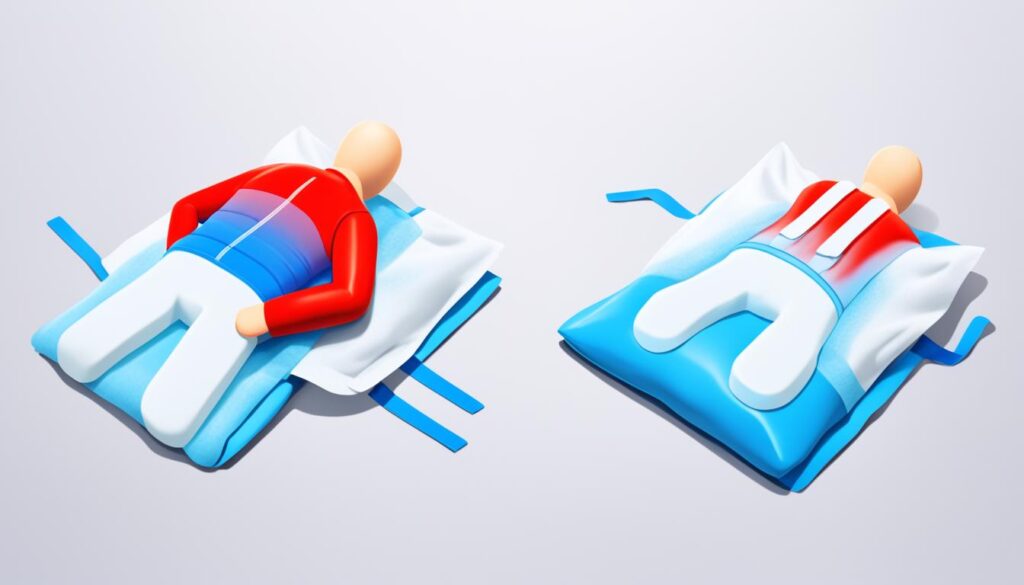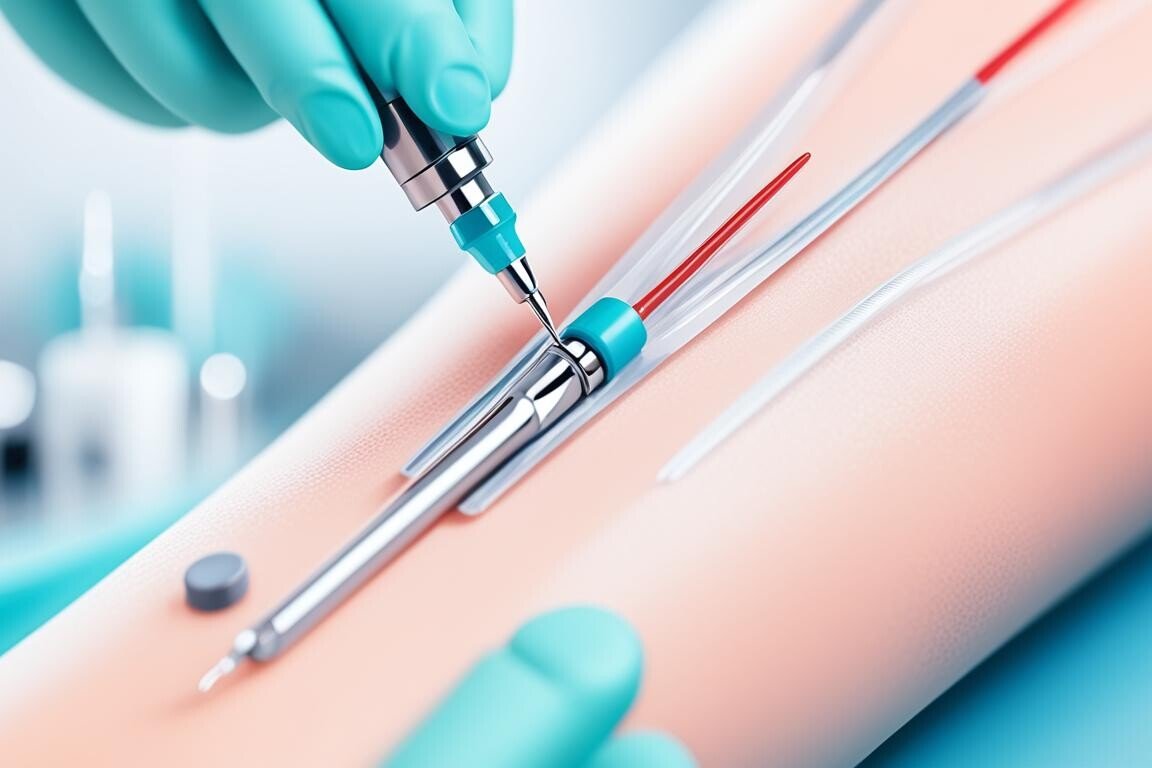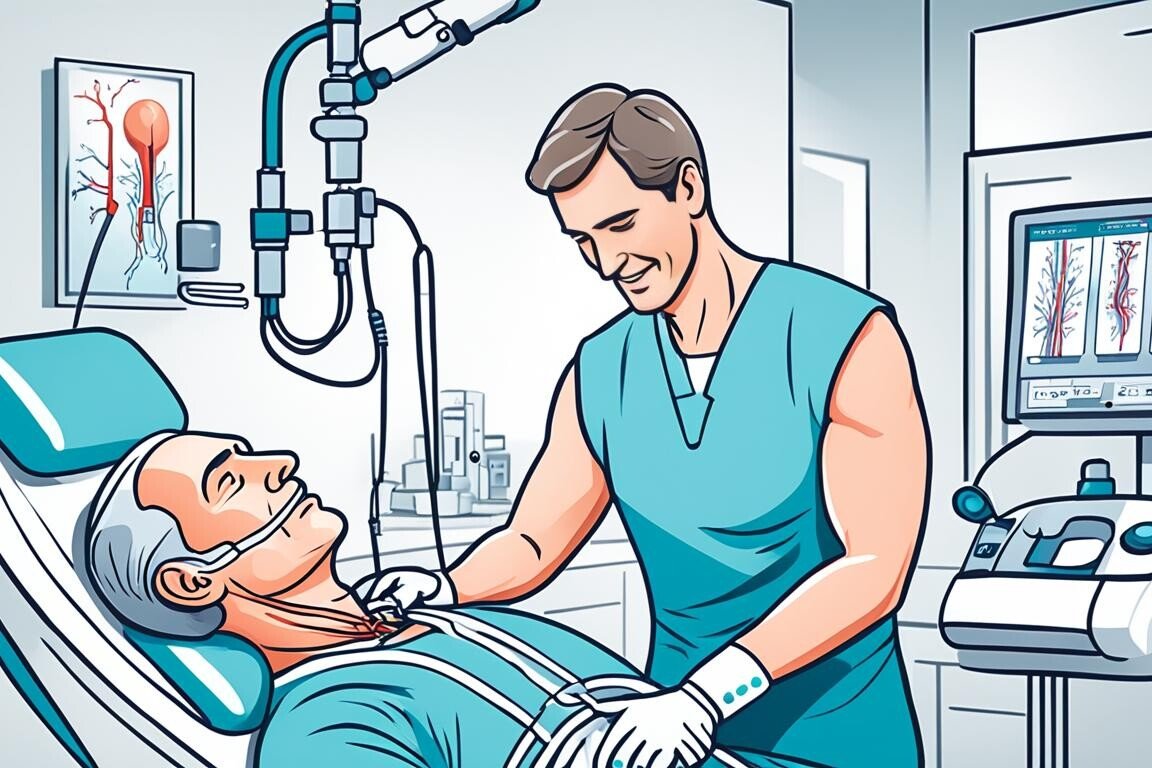Have you ever felt a sudden sharp ache in your back while getting out of bed or sitting at your desk? You’re not alone. Back pain can come without warning and leave you struggling to move. But what if you could get instant back pain relief right at home using safe, simple methods?
In this blog, we will walk you through 7 easy tips to help you find instant back pain relief. Whether you’re dealing with tight muscles, poor posture, or long sitting hours, these solutions are fast, practical, and need no special tools.
Table of Contents
ToggleWhat Are the Most Common Causes of Sudden Back Pain?
Many people experience back pain due to small, everyday mistakes. These problems build up over time and lead to discomfort. Knowing the common causes can help you fix them fast.
Most back pain happens because of simple habits like:
- Sitting for long hours without moving
- Lifting heavy objects the wrong way
- Sleeping on a soft mattress
- Weak abdominal or back muscles
- Bending over while using your phone or laptop
Imagine you’re working from home. You’re slouched on your sofa, typing away on your laptop. You get up after two hours, and boom, your lower back starts to hurt. This happens to many people with desk jobs.
Stat to Know:
“Over 80% of adults experience back pain at some point, often due to lifestyle and mechanical causes.” — CDC
That’s 4 out of every 5 people!
Read: Home Remedies for Knee Pain: Natural Relief for Joint Discomfort
Can Stretching Really Offer Instant Back Pain Relief?
Yes, it can. Light stretches can ease muscle tightness, improve blood flow, and offer instant back pain relief within minutes.
Here are 3 easy stretches you can try:
Cat-Cow Stretch
- Start on your hands and knees
- Inhale, drop your belly, lift your head (cow position)
- Exhale, arch your back and tuck your chin (cat position)
- Repeat for 10–12 times
This improves flexibility and takes pressure off the spine.
Knee-to-Chest Stretch
- Lie on your back
- Pull one knee toward your chest
- Hold for 20 seconds
- Repeat with the other leg
It relaxes the lower back muscles quickly.

Child’s Pose
- Kneel on the floor, sit back on your heels
- Stretch your arms forward and drop your head
- Hold for 30 seconds
This is one of the best stretching exercises for pain in your lower back.
How Effective Are Heat and Cold Packs for Quick Back Pain Relief?
Using heat or cold can offer instant back pain relief if done correctly. The trick is to know when to use what.
| Situation | Use Heat or Cold | How It Helps |
|---|---|---|
| Sudden injury (1-2 days) | Cold | Reduces swelling and numbs pain |
| Chronic tension or stiffness | Heat | Relaxes tight muscles and boosts blood flow |
Research Insight:
“A study in the Journal of Clinical Rehabilitation found heat wraps reduced lower back pain intensity by 47% within 2 hours.”
You can try:
- Hot water bag
- Heating pad
- Ice pack wrapped in a towel
Reminder: Don’t use them for more than 20 minutes at a time.

Back Stretches and Yoga Poses
Dealing with back pain can be tough, but good news is simple stretches and yoga poses can help. These exercises target muscles and joints around the spine. They improve flexibility, reduce muscle tension, and help with spinal alignment. This can ease your back pain.
Simple Stretches for Back Pain Relief
The knee-to-chest stretch is easy and very helpful. Lie on your back and pull one knee towards your chest. Hold for 30 seconds, then switch sides. It helps ease tension in the lower back and hips.
The cat-cow pose is another good choice. Start on your hands and knees. Arch your back and look up for the cow pose, then round your spine and tuck your chin for the cat pose. Do this 10-15 times to loosen your back.
The pelvic tilt is simple yet effective. Lie on your back with knees bent and feet flat. Tilt your pelvis up, pressing your lower back into the floor, then release. Do 10-15 reps to help your core and ease lower back pain.

Adding these stretches to your daily routine can greatly help with back pain. Always listen to your body and don’t push too hard. The goal is to do the exercises gently and regularly.
Can Good Posture Fix Back Pain Instantly?
Yes. Sometimes, just standing or sitting properly can bring instant back pain relief.
Quick Mirror Test:
Stand in front of a mirror. Is one shoulder higher than the other? Is your head tilted forward? These are signs of poor posture.
Wall Test:
- Stand with your back against a wall
- Heels, buttocks, shoulders, and head should touch the wall
- This is your ideal posture
Correct Posture Tips:
- While sitting: Keep feet flat, back straight, and monitor at eye level
- While standing: Weight balanced on both feet, avoid leaning
Bad posture can lead to spinal strain. Follow posture correction tips daily to avoid it.
Pain Relief Creams and Ointments
For those with ongoing back pain, over-the-counter creams and ointments can offer quick relief. These topical treatments are easy to use and target specific pain spots. They can be a key part of managing back pain.
Topical Creams for Back Pain
Creams with menthol can cool and numb the area, easing pain. Those with CBD may also help by reducing inflammation.
Choosing the right pain relief cream is easy with so many options in India. You can pick from Diclofenac Diethylamine, Linseed Oil, Menthol & Methyl Salicylate Gel, or Pain Killer Tablets. Each has its own rating and price, making it easy to find what works for you.
Using these creams with other treatments like exercise and heat or cold therapy can help more. Adding pain relief creams to your daily routine might just bring the relief you’ve been looking for.

Massage Therapy
If you’re dealing with back pain, massage therapy might help. It can relax tight muscles, boost blood flow, and ease discomfort. Techniques like kneading, friction, and gliding focus on sore spots with soft tissue massage.
Studies are still looking into how well massage works for long-term back pain. Yet, many people find it helpful when used with other treatments. A 2011 study in the Annals of Internal Medicine showed massage helped people with chronic back pain for six months.
Back pain can come from many things, like falls, heavy lifting, bad posture, or sitting too much. Issues like bulged or broken discs, arthritis, and osteoporosis can also cause pain. If your back pain doesn’t go away or is very bad, see a doctor to find out why and get a full treatment plan.
Massage therapy is a great option for back pain relief. It targets sore areas and helps you relax. Massage therapy for back pain can make a big difference in how you feel overall.

Herbal Remedies for Back Pain
If you’re looking for natural ways to ease back pain, consider herbal remedies. Plants like turmeric, ginger, and devil’s claw have anti-inflammatory properties. These can help reduce pain. Always talk to a healthcare professional before adding them to your treatment plan, especially if you’re on other medications.
Natural Herbs for Back Pain Relief
Turmeric comes from the Curcuma longa plant and is known for its anti-inflammatory compounds. These compounds, called curcuminoids, may help lessen back pain. Ginger is another herb that can reduce inflammation and ease back pain.
Devil’s claw, from Southern Africa, is used to help with back pain. It has compounds like harpagoside that can lessen inflammation and ease muscle and joint pain.
While these herbs look promising, always talk to your healthcare provider before trying them. They might interact with your medications or have side effects. Adding natural herbs to your back pain care could be a good, holistic choice.

Proper Posture and Ergonomics
Good posture and ergonomic furniture are key to avoiding back pain. Using the right sitting, standing, and lifting methods can ease back muscle and spine strain. It’s crucial to pay attention to your posture and adjust your workspace and daily habits to support your back health.
Sitting for long periods can cause back pain by putting stress on your back, neck, arms, and legs. This can also put pressure on your back muscles and spinal discs. Over time, poor sitting posture and ergonomics can damage your spinal structures, leading to neck or back pain.
Maintaining Proper Sitting Posture
- Ensure your upper arms are parallel to your spine.
- Be able to easily slide your fingers under your thigh at the chair’s edge.
- Adjust the chair’s depth to provide calf support.
- Maintain lower back support to minimize strain.
- Position your computer screen at eye level.
- Adjust armrests to slightly lift your arms at the shoulders.
Active seating options like Swedish kneeling chairs or Swiss exercise balls can help keep you upright and strengthen muscles. Remember, chairs with good lumbar support are crucial for keeping your spine naturally curved and easing lower back strain.
Improving Standing and Lifting Techniques
Standing correctly, with your ears, shoulders, and hips in line, can ease strain and support your spine. Always bend your knees when lifting to keep your posture right and lower injury risk.
Doing exercises like shoulder rolls and chest stretches can strengthen muscles that support your spine. Switching between sitting and standing at work can also help maintain better posture and improve your overall health.
By focusing on proper posture and ergonomics, you can effectively prevent and manage back pain. This ensures your body stays well-supported all day.
Getting Quality Sleep
Getting good sleep is key when you have back pain. Studies show that bad sleep can make back pain worse. It’s important for your body to heal and muscles to recover.
To help your sleep and ease back pain, try these tips:
- Use supportive pillows: Choose pillows that keep your spine straight and support your head, neck, and shoulders. [1]
- Avoid sleeping on your stomach: Stomach sleeping can strain your back and neck. Try sleeping on your side or back instead. [1]
- Keep a regular sleep schedule: Stick to a routine to help your body’s natural sleep cycle. [1]
- Fix sleep problems: If you often have trouble sleeping, like sleep apnea or insomnia, see a doctor. [1]
Using these tips and focusing on good sleep can help manage your back pain. A rested body can heal and recover better from back issues.
Anti-Inflammatory Diet
If you’re dealing with back pain, trying an anti-inflammatory diet might help. This diet focuses on foods that lessen inflammation. It can help ease your pain and support your spine’s health.
Foods to Include
- Whole grains like brown rice, quinoa, and whole wheat bread, which are rich in fiber and nutrients that can help reduce inflammation.
- Dairy products such as yogurt, milk, and cheese, which are excellent sources of calcium and vitamin D, essential for strong bones and preventing back issues.
- Fruits and vegetables, especially those that are deeply colored, as they are high in antioxidants and anti-inflammatory compounds.
- Fatty fish like tuna, salmon, and sardines, which are rich in omega-3 fatty acids that can help reduce inflammation.
- Nuts and seeds, such as almonds, walnuts, and flax seeds, which are also high in anti-inflammatory omega-3s.
- Turmeric and ginger, which contain compounds like curcumin that are known for their potent anti-inflammatory properties.
Adding these anti-inflammatory foods to your meals can help control inflammation. This can lessen your back pain.
Foods to Avoid
It’s also key to eat fewer foods that can cause inflammation. These include foods high in added sugars, unhealthy fats, and processed carbs. Examples are:
- Processed foods and baked goods with trans fats and saturated fats
- Refined carbohydrates like white bread, pasta, and sugary snacks
- Alcohol, which can cause dehydration and hinder the absorption of essential nutrients
By eating fewer of these foods and more anti-inflammatory ones, you can help manage your back pain. This supports your spine’s health.
Stress Management Techniques
Stress can make back pain worse. Adding stress management to your treatment plan can really help. Techniques like mindfulness meditation, deep breathing, progressive muscle relaxation, and guided imagery can ease tension. They help with both the mind and body aspects of back pain.
Mindfulness and Relaxation for Back Pain
Mindfulness meditation helps you stay in the moment. It lets you watch your thoughts and feelings without judging them. This can ease stress and anxiety linked to back pain. Deep breathing exercises also help by relaxing your muscles and easing back tension.
- Progressive muscle relaxation means tensing and then relaxing each muscle group. It helps you find and release tight muscles.
- Guided imagery lets you imagine peaceful scenes. It moves your mind away from pain, bringing relaxation and well-being.
Adding these stress-reducing activities to your daily life can help with back pain relief. Remember, it’s as important to manage stress as it is to treat the physical side of your condition.
instant back pain relief
If you’re looking for quick relief from back pain, there are simple steps you can take. These strategies offer fast and easy ways to ease discomfort. They help you manage your pain until you find lasting solutions.
Applying Ice and Heat
Using ice and heat is a great way to ease back pain. For acute pain, put an ice pack on the area for 7-10 minutes. This helps reduce swelling and dulls the pain. For ongoing pain, a heating pad or warm compress can relax muscles and improve blood flow.
Gentle Stretching and Exercises
Doing gentle exercises and stretches can help with back pain. Stay away from moves like toe-touches and leg lifts. Instead, try partial crunches, wall sits, and knee-to-chest stretches. Hold each stretch for 20-30 seconds and repeat 10-15 times to help your spine and muscles.
Topical Pain Relief Creams
Topical creams or ointments can also offer quick relief by reducing inflammation. Look for products with menthol, capsaicin, or diclofenac. These ingredients target pain and provide temporary relief.
Relaxation Techniques
Relaxation techniques like deep breathing can ease muscle tension and stress. These are common causes of back pain. Spend a few minutes each day practicing deep breathing to help you relax and feel better overall.
By adding these easy tips to your daily life, you can find fast relief from back pain. Remember, being consistent and patient is important for dealing with back pain effectively.
What Simple Movements or Activities Can Provide Fast Relief from Back Pain?
Too much rest is not good. Moving gently can help your body heal faster.
Try These Activities:
- Walk short distances every 1–2 hours
- Do light yoga poses like Bridge Pose or Cobra Pose
- Practice pelvic tilts while lying down
Expert Note:
“Research by the American Physical Therapy Association suggests that light movement speeds recovery better than prolonged bed rest.”
Movement helps loosen tight muscles and is one of the best easy back pain remedies.
When to See a Doctor
Home remedies and self-care can help with mild to moderate back pain. But, if the pain is severe, lasts a long time, or has other symptoms, see a doctor. A healthcare professional can diagnose, rule out conditions, and suggest treatments like physical therapy, medication, or surgery.
If you have chronic or severe back pain, don’t wait to see a doctor. Your back needs proper care and management. Here are signs it’s time to get medical help for your back pain:
- Back pain that lasts over two weeks and affects your daily life
- Back pain with fever, trauma, loss of bladder or bowel control, arm and leg weakness, or unexplained weight loss
- Radiating back pain that causes numbness or tingling in other body parts
- Back pain that wakes you up at night, which could mean a serious issue
Remember, getting medical help for your back is key. Early diagnosis and treatment can stop the condition from getting worse and improve your life quality. Don’t delay in taking steps to manage your chronic back pain or severe back pain.
Conclusion
Back pain can be tough and complex. But, with a mix of home remedies and self-care, you can find relief and better your life. This article shared 7 key tips for quick back pain relief. From exercises and stretches to hot and cold therapy, pain relief creams, herbal remedies, and stress management, you now know how to help yourself.
By using these tips and working with doctors when needed, you can manage your back health better. A holistic approach that tackles the real causes of pain is crucial for lasting relief and avoiding future pain.
So, start using these back pain relief tips every day. With some effort and commitment, you can live a pain-free life and get back to your active, healthy routine.
FAQ
What are the common causes of lower back pain?
What are some low-impact exercises that can help relieve back pain?
How can hot and cold therapy help with back pain?
What are some simple stretches and yoga poses that can alleviate back pain?
How can pain relief creams and ointments help with back pain?
How can massage therapy help with back pain?
What are some natural herbal remedies that can help with back pain?
How can proper posture and ergonomics help prevent and manage back pain?
How does sleep quality affect back pain?
How can an anti-inflammatory diet help with back pain?
What stress management techniques can help with back pain?
What are some quick and easy tips for instant back pain relief?
When should someone seek medical attention for back pain?
See a doctor if the pain is severe, lasts long, or has other worrying signs. A healthcare professional can diagnose and suggest the right treatment.
Source Links
About The Author

This article is medically reviewed by Dr. Chandril Chugh, Board-Certified Neurologist, providing expert insights and reliable health information.
Dr. Chandril Chugh is a U.S.-trained neurologist with over a decade of experience. Known for his compassionate care, he specializes in treating neurological conditions such as migraines, epilepsy, and Parkinson’s disease. Dr. Chugh is highly regarded for his patient-centered approach and dedication to providing personalized care.
→ Book a consultation to discover which remedies suit your needs best.




